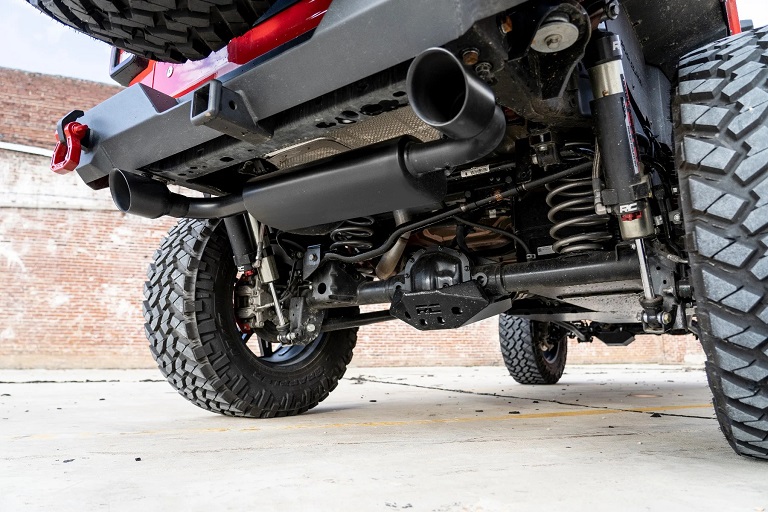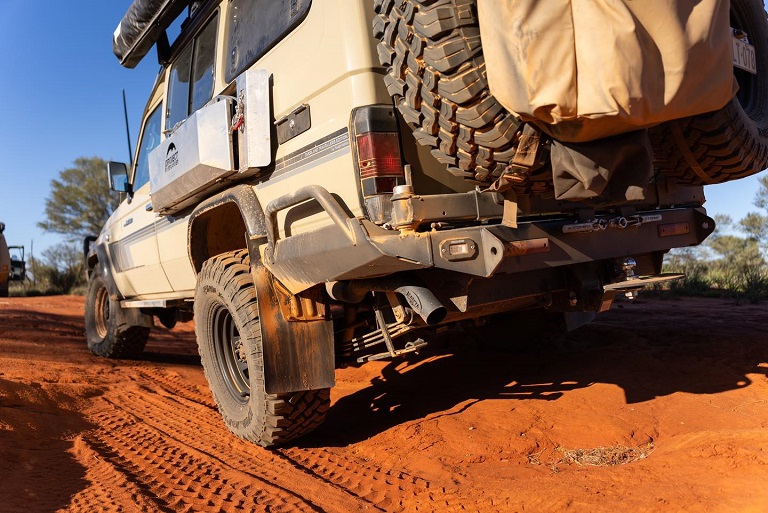Contents
Considering a performance upgrade for your 4X4? One that gets the most out of the engine and gives you extra push when and where you need it? Look no further than aftermarket exhausts. This gets you more low-end torque and power higher up, produces an addictive sound each time you work the pedal, and lasts forever, even in abusive environments. A well-built unit runs circles around anything you get in a rugged ute or 4WD from the factory, looks much better and can save you a ton of cash on longer journeys.
Why Change the Factory Exhaust?

So, you might be thinking about where the stock exhaust falls short. First is the mediocre build and the cost-cutting measures to keep the price of the vehicle low. Here you’ll see crush-bent mild steel in narrow tubing (usually around 2.5 inches max). This alone creates a few problems. There are more restrictions to slow down the spent gases on their way out, low strength that struggles with high gas temperatures and pressure, and the risk of damaging the exhaust walls when scraping against rocks or when driving through mud or water. Then, there is the layout, with the factory unit slithering its way around nooks and bends. This results in increased backpressure, essentially hurting engine performance and efficiency to the point that your 4×4 is struggling to get the power down.
Another issue is that narrower tubes don’t help with exhaust sound. This is also compromised by regulations emissions with filters and converters further reducing exhaust velocity, and droning out even more of the sweet engine sound in the process. The good news for buyers is that aftermarket 4×4 exhausts deal with all that’s wrong in factory units, without costing an arm and a leg. But with so many options, what do you choose? Here are a few simple steps to help you choose your next system:
Consider Build and Materials
Aftermarket exhausts are better built and use superior materials. Entry-level systems that still deliver all benefits are built using mandrel-bent stainless steel, which is rust-proof, much stronger and also looks better. It will last in harsh conditions all 4WDs and utes are put through, won’t dent or pick up scratches, and keeps its shape even on impact. It can safely handle more heat and pressure when running the vehicle in low gear on tougher terrain.
If you have more cash to spend, you can do even better. Titanium, carbon fibre and Inconel are some of the luxurious materials that are used on systems higher up the range. Titanium and Inconel are seen in headers, mid-section pipes and end-pipes, and carbon fibre adds substance to the tips. The materials are even stronger, but also lighter and with distinctive looks. And they’ll far outlast anything coming from the factory, but you’ll be spending big.
Choosing from the Different Exhaust Configurations and Layouts
Straighter layouts from headers to tips let the exhaust gases leave faster, which results in more power and engine efficiency. Buyers can choose from three basic ‘complete’ systems – axle-back, DPF/Cat-back, and header/turbo-back varieties. Go with axle-back systems for improvements to the exhaust sound and slight weight savings, with DPF systems in diesels for added low and mid-end torque, and header or turbo back (depending on the engine) to use all the power the engine has in reserve.
Another thing is the difference between single and twin layouts, depending largely on how many cylinders are thumping under the hood. Some manufacturers also offer H and X-pipe layouts to get gases out faster or improve the sound. Understandably, each type is priced differently, so balance your needs and wants with your budget.
Sizing the Exhaust

Options in 4×4 exhausts include 3 and 3.5-inch tubes. The wider tubing does help with better exhaust flow, but you don’t have to spend more necessarily. Smaller four and six-cylinder engines will be fine with 3-inch tubes, while bigger V8s are better off with the wider tubing.
Tuning the Sound
Different vehicles and engines produce different sounds. And this also depends on how old your 4WD or ute is. If you feel there’s too much sound coming into the cabin, then go with resonator and muffler combinations to quieten things down. These are especially helpful on older cars. If you want to go the opposite route, then opt for straight tubes and straight mufflers to get more rumble and roar, while still being safe with emissions regulations. Many companies have their own signature exhaust note, so have a listen to what you like before buying. Some also include neat tech, such as valving, for a few dollars more.
Choosing the Right Brand
There are hundreds of aftermarket 4×4 exhaust brands. They’re all better than the generic systems from the factory, but will differ in quality, pricing and how all parts are put together. Go for local brands if you value workmanship and attention to detail. All have done extensive research and testing on numerous off-road vehicles and have tailored exhaust lineups matching demanding Australian conditions and ADR regulations. There are no issues with fitment and installation is quick. Again, if cash isn’t an issue, say in a 300 series or new Patrol, then consider renowned international brands.

